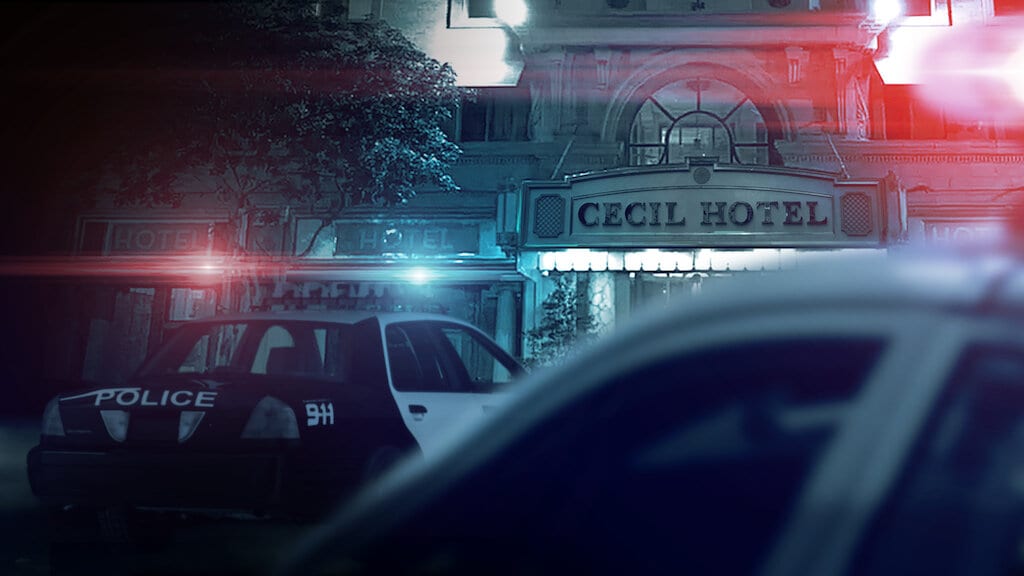CW: Death, discussion of mental illness
If you’ve been on the Internet at all in the past ten years, then you’ll most likely have seen the CCTV footage of 21-year-old Elisa Lam, acting with bizarre mannerisms as she jumps in and out of a lift, gesticulating at someone who never appears. This video is the last known sighting of Elisa before her disappearance, and the eventual discovery of her body, at the Cecil Hotel in 2013, and the strange nature of her behaviour has made this video infamous on the Internet. It only takes one YouTube search to find the plethora of theories, both plausible and insane, which have been suggested as an explanation for Elisa’s death in a water tank on the roof of the hotel she was staying in.
Crime Scene: The Vanishing at the Cecil Hotel, directed by Joe Berlinger and released this February on Netflix, is a four-part docuseries that follows this infamous case. Berlinger contextualises the case within the murky past of the Cecil Hotel, which, since its opening in the 1920s, has been the site of multiple deaths as well as a temporary home to infamous serial killer Richard Ramirez (the subject of another recent Netflix docuseries titled Night Stalker: The Hunt For a Serial Killer). Yet, unlike the Night Stalker documentary which does a good job of discussing Ramirez’s crimes by prioritising the voice of his victims in a sensitive and enlightening way, Crime Scene falls short at the first hurdle, losing itself to unfounded speculation and a misplaced focus on trivial details.
Each episode aims to approach the Elisa Lam case from a different angle. The first briefly outlines the case and explores the dark history of the Cecil Hotel, with subsequent episodes looking at the media coverage of the police investigation and the various theories surrounding the case. Eventually, the series concludes that it was a tragic accident, exploring Elisa’s mental state in the days leading up to her death. Unfortunately, however, this varied approach is somewhat lacking. The third episode, which covers some of the insane theories about Elisa’s death – with one suggesting she was a CIA agent, sent to downtown L.A with a new variant of Tuberculosis in order to wipe out the homeless population – shrouds the true tragedy of the case in unfounded speculation, drowning out the brief readings of Elisa’s blog posts with endless clips of YouTubers and web-sleuths.
This structure of giving us various wild opinions before coming to its own, more factual conclusion is ineffective. Though this may work in a fictional crime series, in which intentional misdirection can cause more intrigue and suspense for the viewer, in a real-life case it just feels distasteful.
When journalist Josh Dean in the first episode describes the Cecil Hotel as being ‘as much a character as Elisa is’, he was not wrong, and this is where the problem lies for me. The four-part nature of the series means that it loses focus, with too much time spent exploring the history of the Cecil and the surrounding downtown area, and too much of a voice given to irrelevant interviews which have only a tangential relationship to Elisa or the case itself. If I had wanted to watch YouTuber John Lordan, who describes Elisa’s disappearance as ‘supernatural’ (something which I believe sensationalises and undercuts the true tragedy of her death), then I would have looked at his YouTube channel, and not watched a documentary. Web-sleuth John Sobhani further demonstrates this problem, crying dramatically that with Elisa’s death it felt like he had lost ‘a friend’ or ‘a sister’, despite never having met her.
Source: Medium
The last episode was the series’ strongest, taking a more factual approach and considering the basic facts of the case. This episode does a good job of documenting Elisa’s mental state and how her frustration with her diagnosis of bipolar disorder may have led her to undertake her prescribed medications. This is voiced incredibly well, with Elisa’s own sadness and frustration, but also her joys and her aspirations for the future, given voice to through the extracts from her Tumblr blog which are scattered throughout, and which end this episode. Her family and friends, for obvious reasons, do not give interviews, but this episode does a good job of piecing together Elisa’s voice with first-hand reports of her behaviour, as well as factual evidence such as her autopsy and toxicology report. The conclusion that this was a tragic, preventable accident seems to be measured and thought out, and the final episode’s ending on the impact which Elisa’s short life had is an ending that does justice to the sadness of her death.
If you’re new to this case, then maybe you will find something worth watching in these four episodes. Even as an avid true crime fan, I still learnt a few new things about the case myself – but the sinister music, the inclusion of insane and unfounded speculation, the lack of clear focus and the unnecessarily long runtime undermines any meaningful takeaway from this documentary.
I only wish it had been two episodes shorter.
Words by Maebh Howell
Support The Indiependent
We’re trying to raise £200 a month to help cover our operational costs. This includes our ‘Writer of the Month’ awards, where we recognise the amazing work produced by our contributor team. If you’ve enjoyed reading our site, we’d really appreciate it if you could donate to The Indiependent. Whether you can give £1 or £10, you’d be making a huge difference to our small team.

Elisa Lam’s blogs and social media sites are listed here –
http://elisa-lam-blogs.blogspot.com